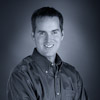I've been turning for three years now and have yet to use the faceplate that came with my lathe. I recently aquired a larger turning blank than I typically work with (20" diameter) and wondered if I should mount it with the faceplate to rough out the outside of the bowl or if I can safely use my traditional method of mounting between centers using a 2" two prong drive center?





 Reply With Quote
Reply With Quote







